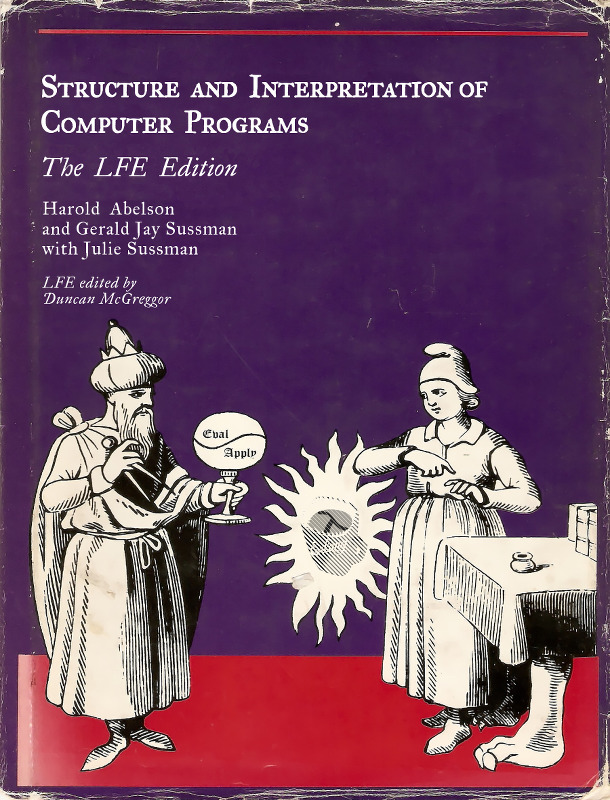The Hidden Origins of Lisp: Introduction
 As mentioned earlier,
this post kicks off a blog series highlighting the new preface for the LFE
edition of Structure and Interpretation of Computer Programs.
(book,
source) The posts will be comprised of the
preface introduction and then a collection of short biographies as pertains to
the foundation (laid by the given individual) which ended up being crucial to
the development of Lisp, concluding with a section regarding Lisp's important
role in the future of computer science and related industries:
As mentioned earlier,
this post kicks off a blog series highlighting the new preface for the LFE
edition of Structure and Interpretation of Computer Programs.
(book,
source) The posts will be comprised of the
preface introduction and then a collection of short biographies as pertains to
the foundation (laid by the given individual) which ended up being crucial to
the development of Lisp, concluding with a section regarding Lisp's important
role in the future of computer science and related industries:
- Introduction
- Giuseppe Peano
- Bertrand Russell
- Alonzo Church
- John McCarthy
- The Place of Lisp in the 21st Century
The LFE preface in SICP also has a quick summary of the origins of Erlang and of LFE itself, discusses changes from the 2nd edition of SICP, then closes with instructions on how to obtain the source for the original, for the LFE edition, and for the code used in the LFE edition's chapters. Those bits are available in the book and won't be presented in this series of the LFE blog.
If you find any issues or have questions, concerns, etc., you may provide feedback about the preface in the dedicated ticket created for tracking such things.
Today we start with the preface introduction; look for the remaining sections in the coming days.
The Hidden Origins of Lisp: Introduction
Beginnings are important. They may not fully dictate the trajectory of their antecedents, yet it does seem they do have a profound impact on the character of their effects. For the human observer, beginnings are also a source of inspiration: good beginnings lend a strength of purpose, the possibility of greater good. The story of Lisp has a good beginning – several of them, in fact – closely tied to the theories of numbers, mathematical logic, functions and types as well as that of computing itself.
At their root, the histories of programming languages spring from, on one hand, the practical considerations of engineering and developer experience, and on the other hand, the principle of computability. This, in turn, ultimately traces its beginnings to the fundamental concepts of arithmetic and mathematical logic: what are numbers and how to we define them rigorously? These questions were asked and considered – sometimes from a fairly vague philosophical perspective – by great minds such as Leibniz (later 1600s; drafts published posthumously), Boole (1847), Grassmann (1861), Pierce (1881), Frege (1884), and Dedekind (1888). It was the Italian mathematician Giuseppe Peano, though, who in 1889 finally identified and distilled the essence of these explorations in terms that were more precisely formulated than those of his peers or intellectual fore bearers. These were subsequently elaborated by successive generations of mathematicians prior to the advent of "high-level" programming languages in the 1950s.
Histories are complicated; complete ones are impossible and readable ones are necessarily limited and lacking in details. In our particular case, there is a complex lineage of mathematics leading to Lisp. However, for the sake of clarity and due to this being a preface and not a book in its own right, the mathematical and computational history leading to Lisp has been greatly simplified in this preface. The four dominant historical figures discussed provide distinct insights and represent corresponding themes as mathematics evolved unwittingly toward a support for computing. Due to the limitation of scope, however, it might be better to view these as archetypes of mathematical discovery rather than historical figures one might come to know when reading a full history. Of the many themes one could discern and extract from these great minds, we focus on the following:
- Understanding and defining the underpinnings of arithmetic and logic ("What are numbers? What is counting?")
- Attempting to formally unify all of mathematics in a consistent framework of logic ("Can I express all of math in discrete logical assertions and statements?")
- Formally defining algorithms and computability ("Is there a procedure that can take any precise mathematical statement and decide whether the statement is true or false?")
- Creating the means by which symbolic computation and artificial reasoning could be made manifest ("Can we make machines solve problems that are usually considered to require intelligence?") 1
Each major topic above depended – in one form or another – upon the preceding topic, and the four famous mathematicians listed in the subsequent sections embodied each of these themes. Small excerpts from their lives and work are shared as believed to have impacted the course of events that lead to Lisp's inception.
-
This is an almost word-for-word quote from John McCarthy's January 1962 submission in the quarterly progress report for MIT's RLE, titled XXI. ARTIFICIAL INTELLIGENCE, page 189 on the original hard copy. The table of contents for the original is available here. ↩
